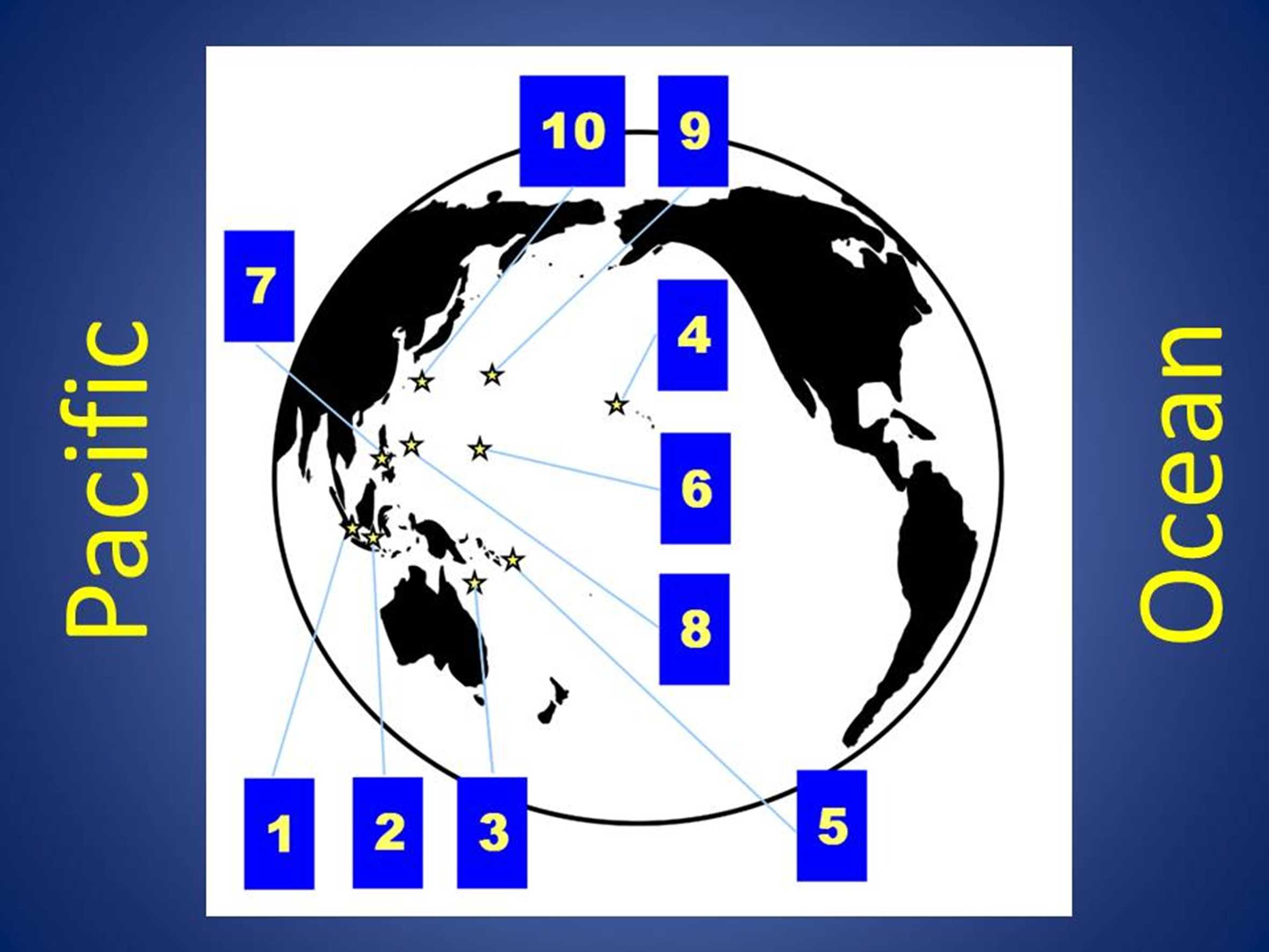
Tragedy in the Pacific Trivia Quiz
Ten Major Battles of WWII in the Pacific Theatre
The attack on Pearl Harbor in Hawaii brought the USA into WWII. Previous tensions between Japan and the US turned into full-blown war. The battle for supremacy in the Pacific Ocean was an absolute tragedy for civilisation. Here are the ten key battles.
A label quiz
by 1nn1.
Estimated time: 3 mins.
- Home
- »
- Quizzes
- »
- History Trivia
- »
- World War II
- »
- Pacific War
